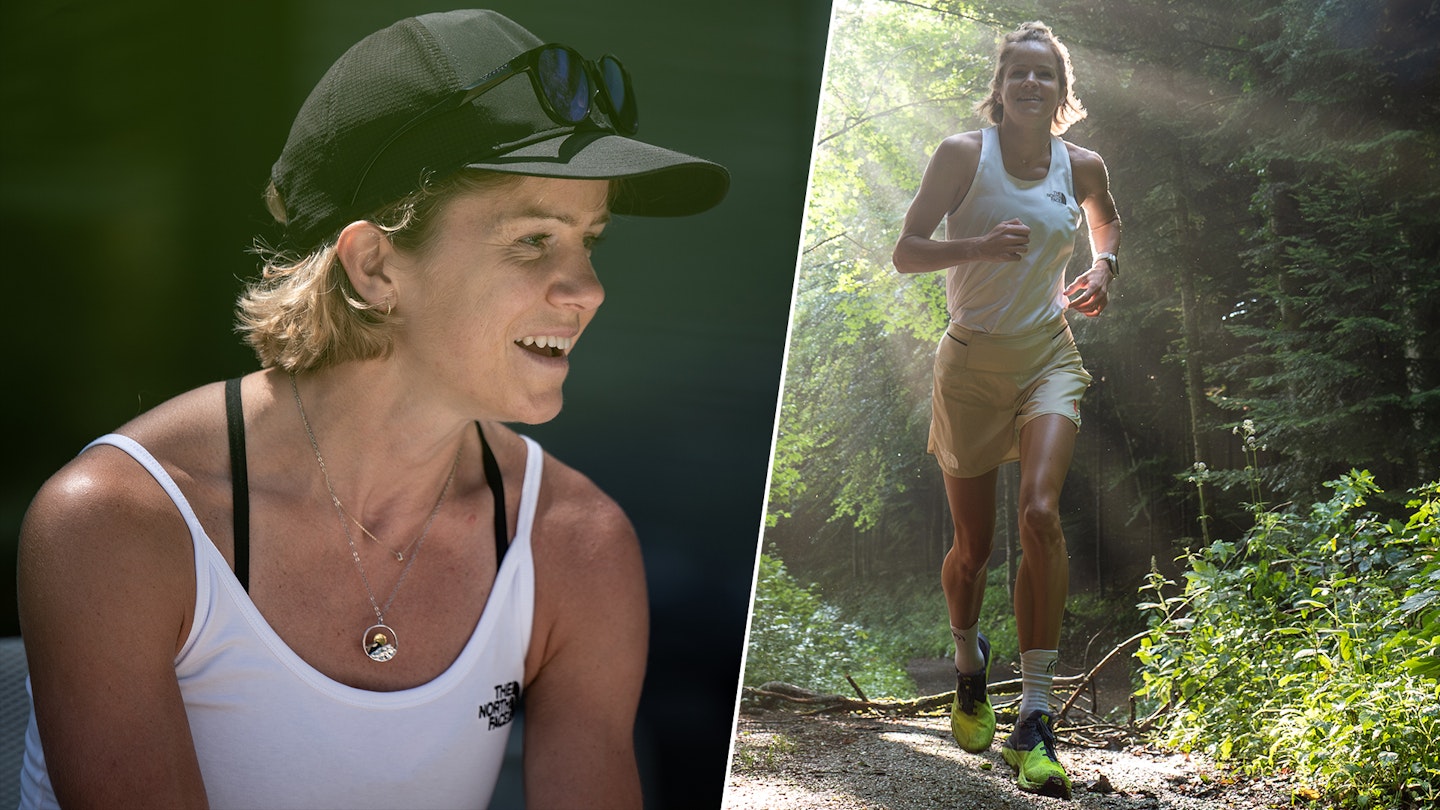It's difficult to imagine being in the elite tier of anything, especially an extreme sport as gnarly as ultra running. We wanted to walk (or, haphazardly jog) a mile in the shoes of a professional ultra runner, so we caught up with Elsey Davis for a look behind the curtain.
Davis is a North Face Athlete with a seriously impressive track record, seeing top placements at the Eiger Ultra Trail in Grindelwald and the Scafell Marathon, as well as holding the women's winter record for the Bob Graham Round. That's one of the UK's most varied and punishing off-road running routes. Davis smashed through all 100km of bogs, boulders, and precarious frozen paths.
Davis is a trained doctor with six years of medical school under her belt. During the Covid-19 pandemic, she and took time out from running to work on covid wards. Her medical training is clear to see as she discusses her own physiology in detail and the key ingredients that have helped her towards success in the ultra running world.
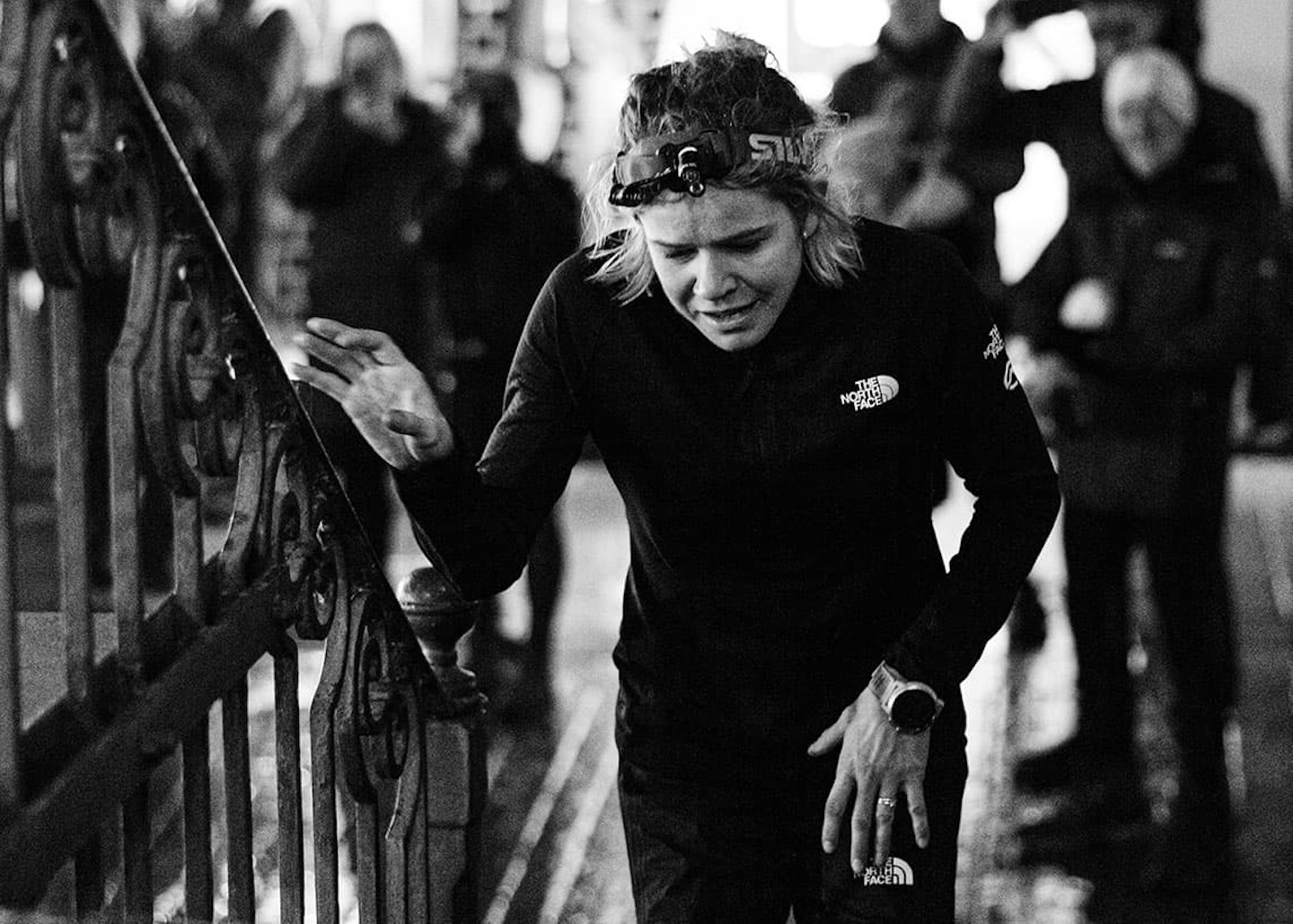
Like many road runners, Davis transitioned to trails after a one too many injuries. While mountain running is also undoubtedly hazardous, she's managed to build a training and racing programme that focuses heavily on injury prevention and recovery. We sat down with her to learn more...
Structure your training
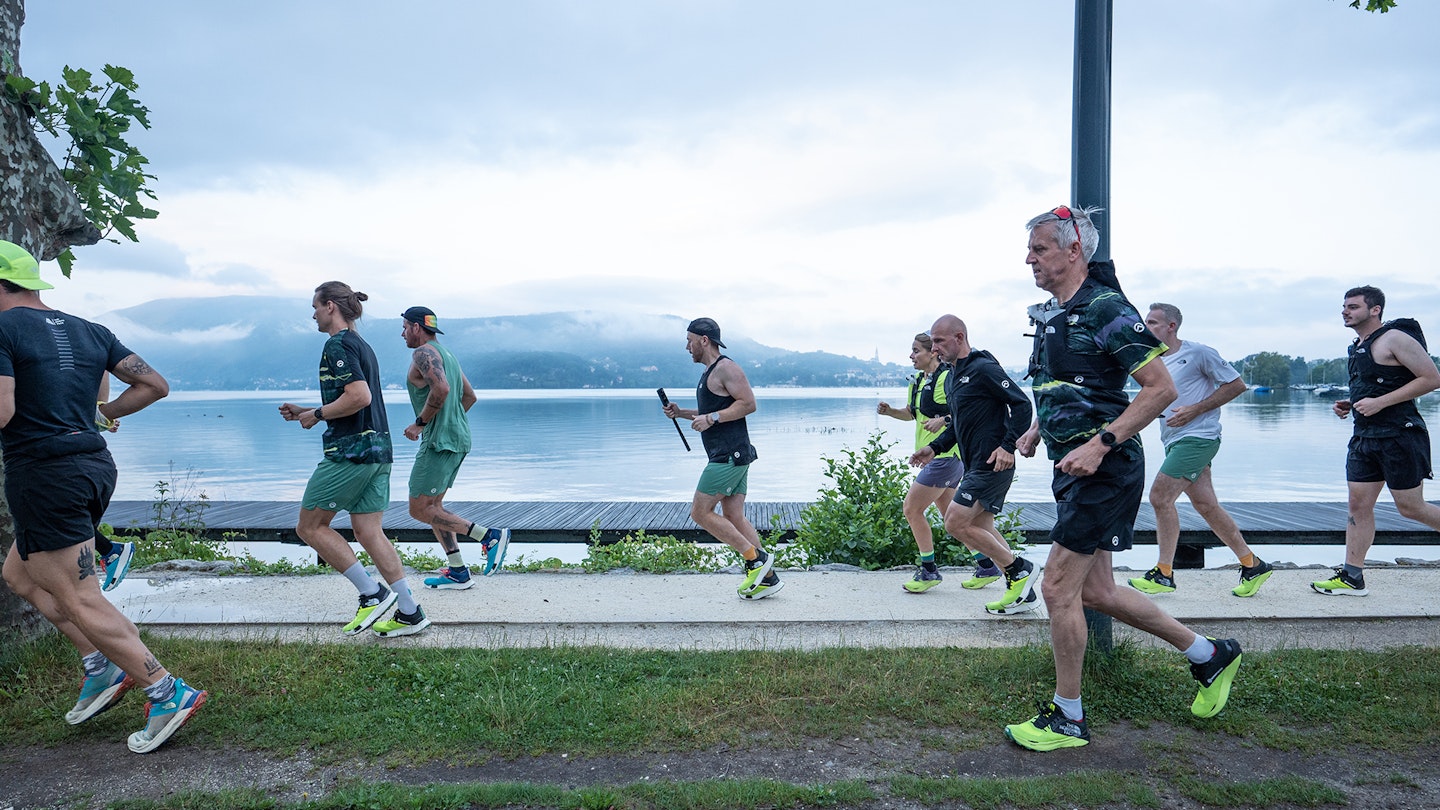
"Join a running club" is Davis' first and most pressing piece of advice for anyone looking to get more disciplined in their running. "There's usually people training for big races who will happily give you advice. I've seen people help each other design an ultra marathon training plan.
"You can learn a lot from other runners; there's no other way of getting deeper into this world. You have to immerse yourself, and learn who to listen to, and who not to!" It's tough figuring out whose advice to follow, but starting with someone that others already trust is the best advice we can give.
"At first, I was running without really thinking about why or what I was doing it for" says Davis, who grew up in Cornwall. She credits the rocky coastal paths for her impressive ability to move smoothly through difficult terrain. "Then, the year I got a coach and started doing drills was when I made the big leap: 2:58 to 2:42 for the marathon."
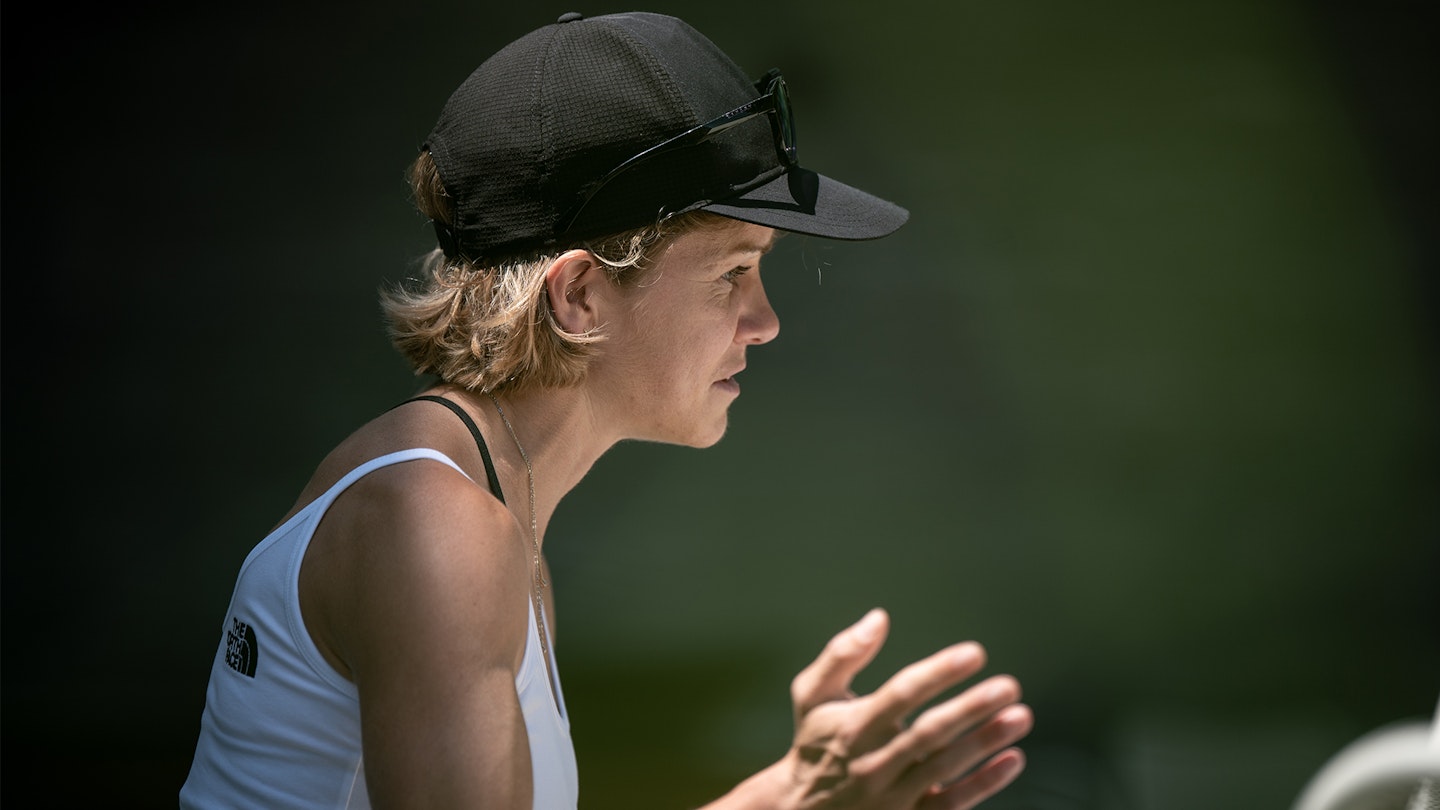
"Coaching gave my training structure", affirms Davis, "but you don't necessarily need a coach to build a training program". Beyond joining a running group, the next best piece of advice Davis shares is to sign up for longer races. Preparing for a specific race gives you a time frame, and you can use the race itself to structure your sessions.
"I study the profile of all my races... I'll find the longest uphill section, and then for a month before the race I'll recreate that hill on my treadmill, or find a similar hill nearby." This is one method to effectively employ methods like uphill drills to improve your running and get ready for race day.
Take injury prevention seriously
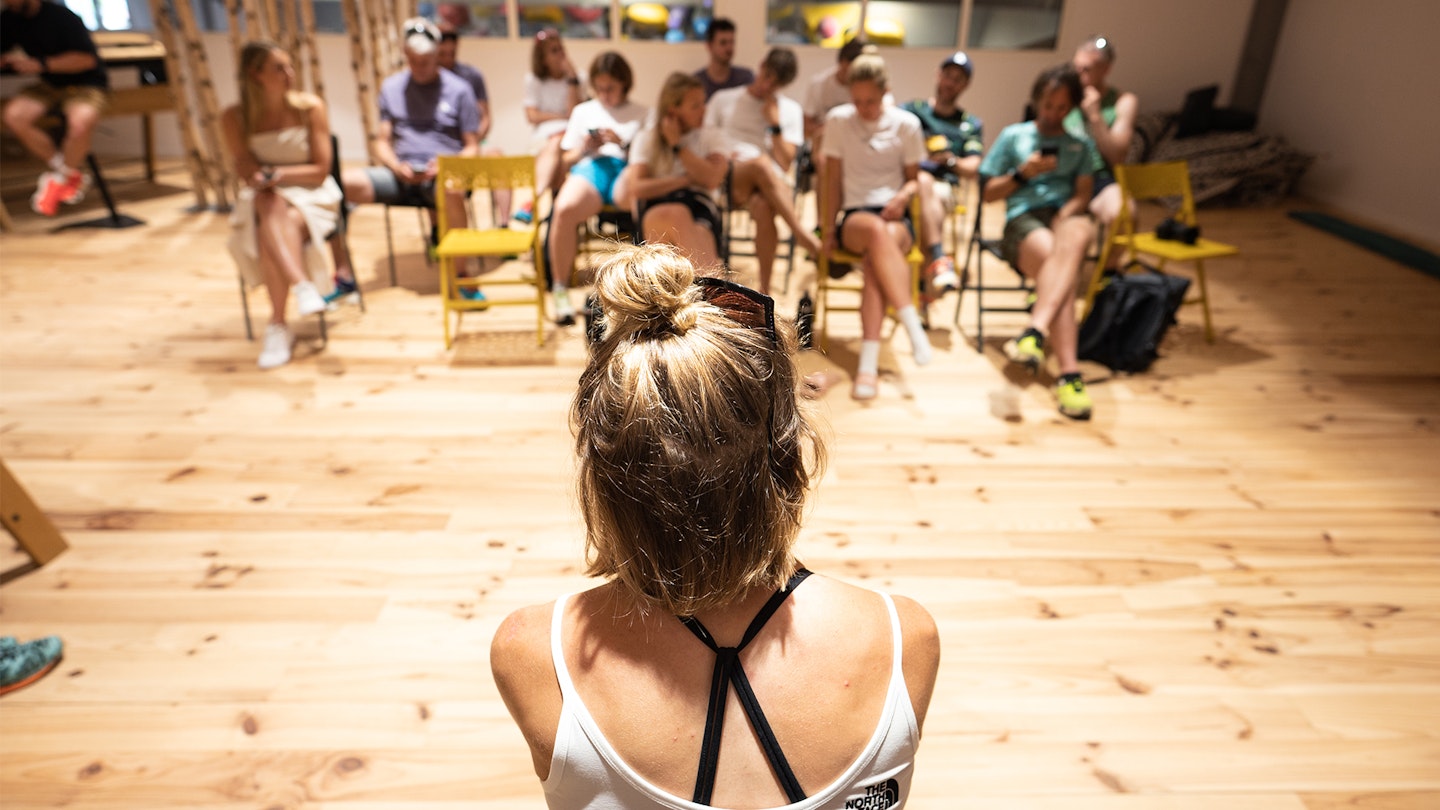
"The problem, though, was that I went too hard too fast," Davis recalls, "like yes, I had a much better result, but I spent a long time injured afterwards". It was this initial experience that lead Davis to structure her training around strength and flexibility, in order to prevent injury and recover as fast as possible after races and hard efforts.
A training program that focuses purely on speed is not sustainable. Ultra marathons and mountain races are hazardous even when they go perfectly. "So, because of that, all of my training is like a B+ at max. I don't push myself as hard as I possibly can because it isn't efficient. The recovery process is too long, you end up training less overall". Training for a race like the UTMB requires accepting that your body is going to sustain a certain amount of damage. This is why injury prevention and recovery is key.
"The red zone is reserved for race day only"
"I definitely think a physio is worth the investment because it’s important to get a bit of guidance, especially at the start" explains Davis. We were curious to learn about the non-running elements of her training, and how they contribute to her performance in ultra races.
Davis explains that there are four key disciplines that she trains in as part of her routine as an ultra athlete: strength training, mobility, proprioception, and plyometrics.
Four key areas to train for ultra running
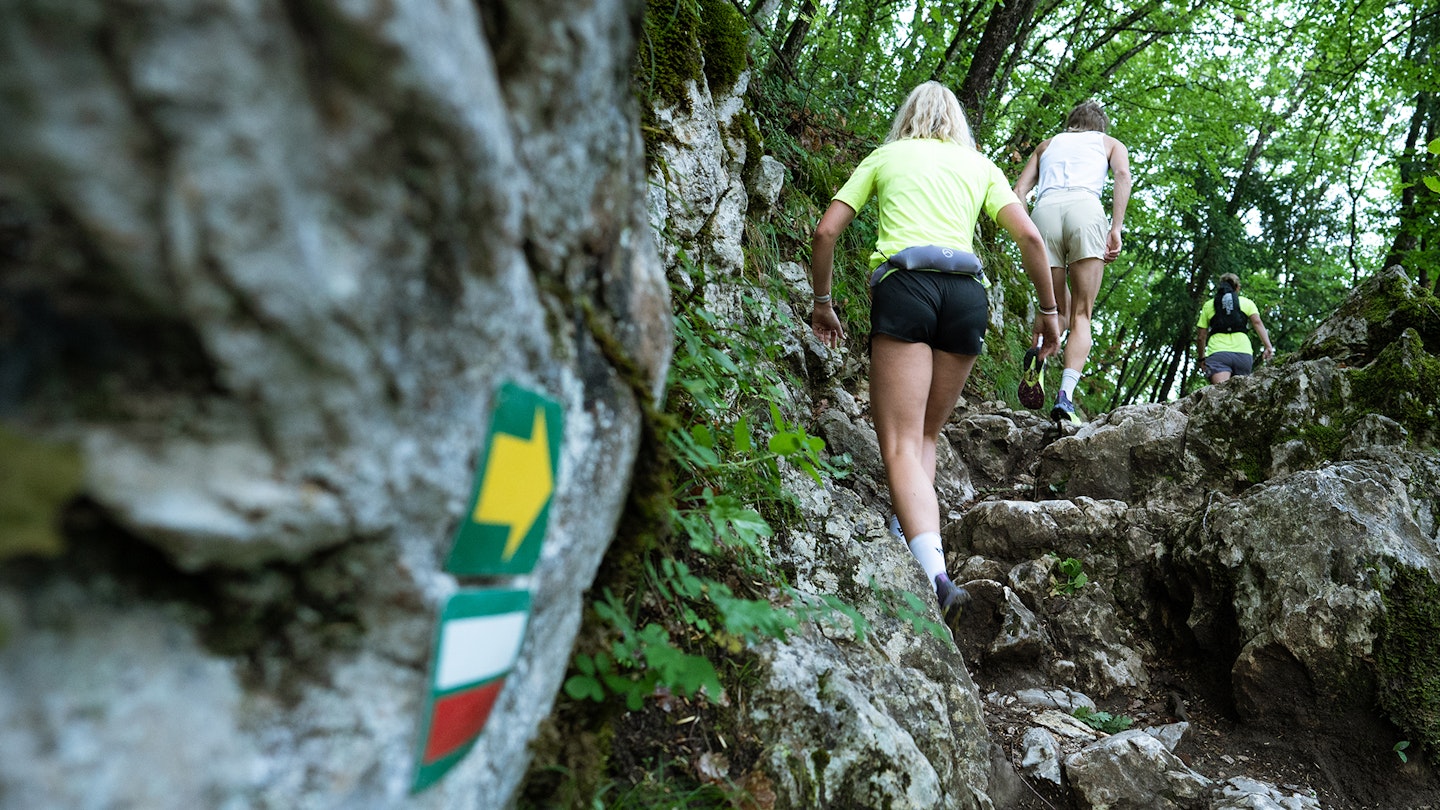
Strength
It is a truth universally acknowledged, that you can't build strength with flat running. Endurance and breathing will get you a long way on the road, but mountain running requires strong muscles in your legs and core. "Your core is what stops you from falling over, when you trip on that rock you can correct yourself."
"My core keeps me up in races, there’s been so many times where I’ve felt it save me. It’s also essential for going uphill." If you've ever found that hiking up steep trails is hell for your lower back, you may be surprised to learn that exercising your core is the solution.
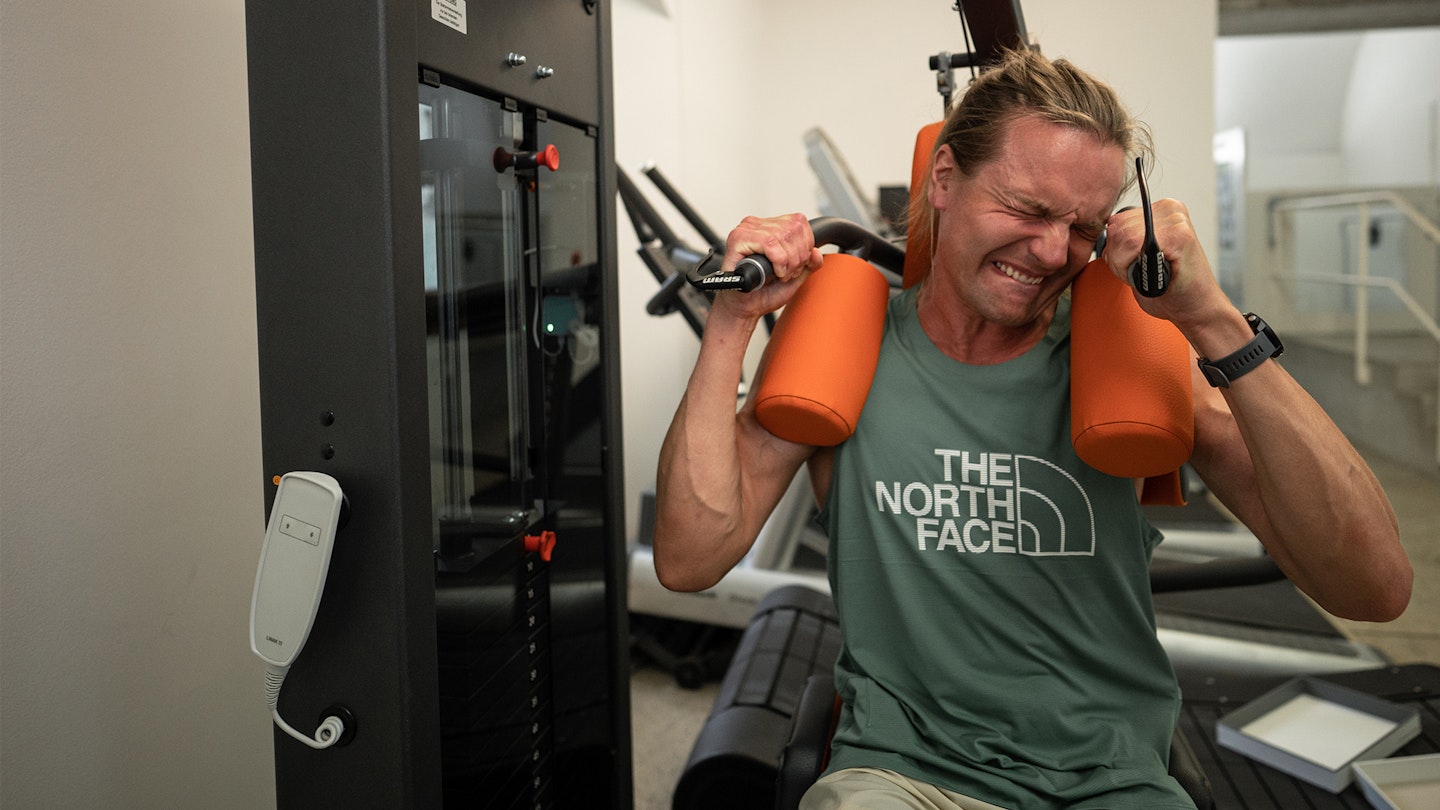
Glute bridges are ideal for working the main muscle groups that are used in running. Leg raises are also an excellent core exercise. To build strength in your legs, we recommend practising weighted squats and single-leg deadlifts. Remember to start with a manageable weight and focus on proper form – these exercises are designed to prevent injury, not create new ones!
Davis also notes that many aspiring ultra runners need to design their strength training around existing injuries. For example, "because I have tibial stress fractures, I’m very calf-focused in my gym programme.: Additionally, strength training is as important for joints as it is for muscle. This is beacuse it can actually increase bone density, which is key to remaining robust and injury-free as you age.
One of Davis' favourite exercises is the high-load, low-impact weighted calf raise, "your achilles tendon loves that!"
Mobility
Apparently, every single North Face Athlete has a sizeable mobility component in their training. Yes, on theme, mobility is a great discipline to train for injury prevention. However, honing your ability to move your muscles and joints freely through their full range of motion contributes far more directly to speed and efficiency over long distances.
Note the distinction between mobility and flexibility: to be an excellent runner, you don't need to train to increase your range of motion, unless it's particularly dire in one or two spots. Rather, it's more important to actively and purposefully control your muscles throughout the entirety of that range.
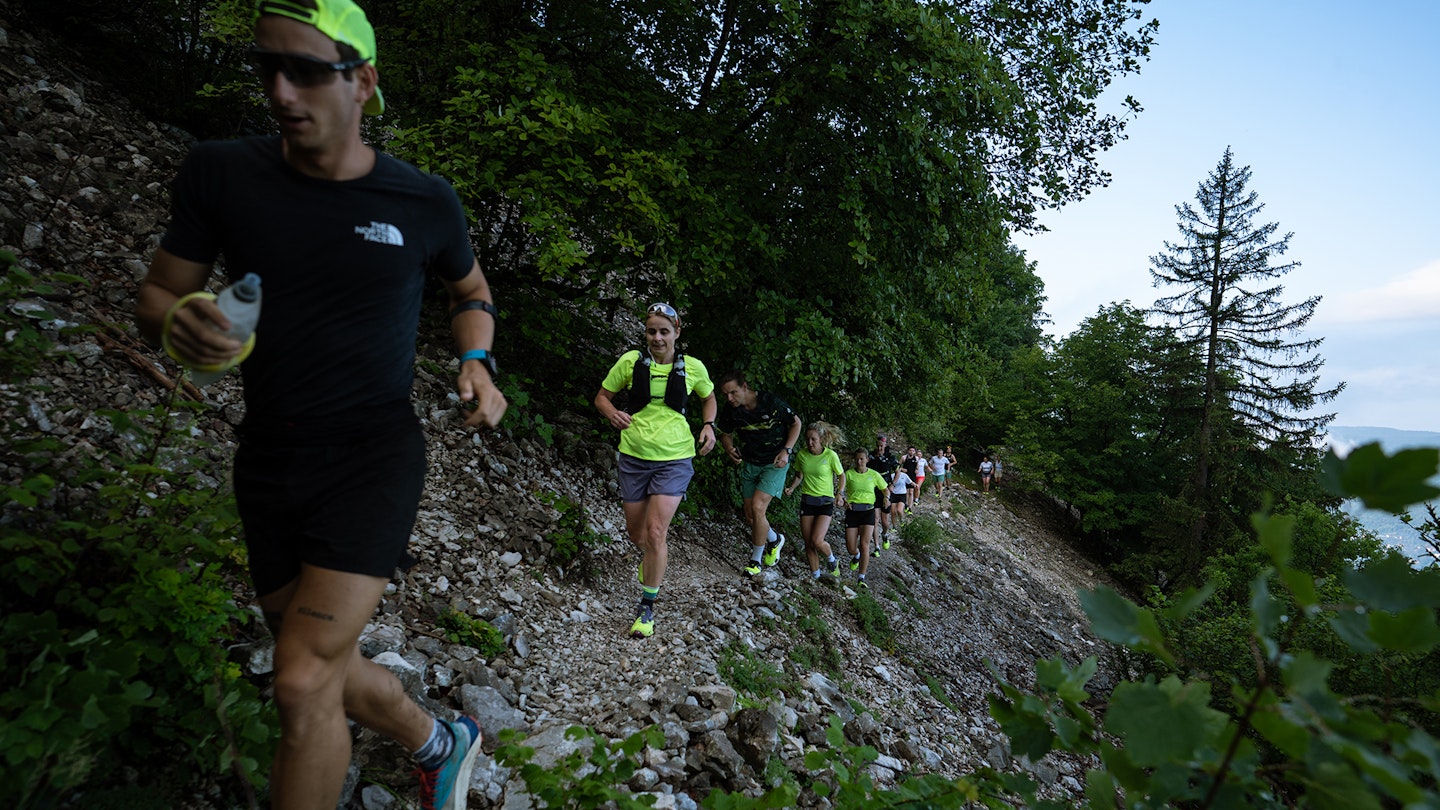
Simply put, passive stretches make you flexible, but active stretching makes you mobile. Davis advises integrating a short, 10-15 minute mobility routine into the start of your strength or cardio workouts.
"No training plan works for everyone", she advises, and it is particularly tough to nail down which mobility exercises work best for you. We recommend researching a few different plans, trying multiple exercises for different areas, and ensuring that, whichever you pick, your routine contains at least one exercise for your hip flexors, your ankles, spine, and shoulders.
Shoulders may be a surprise, but one essential part of running mobility is contracting your shoulder blades and allowing your ribs to open up and fill with air. A great runner is a great breather, as the old saying goes.
Proprioception
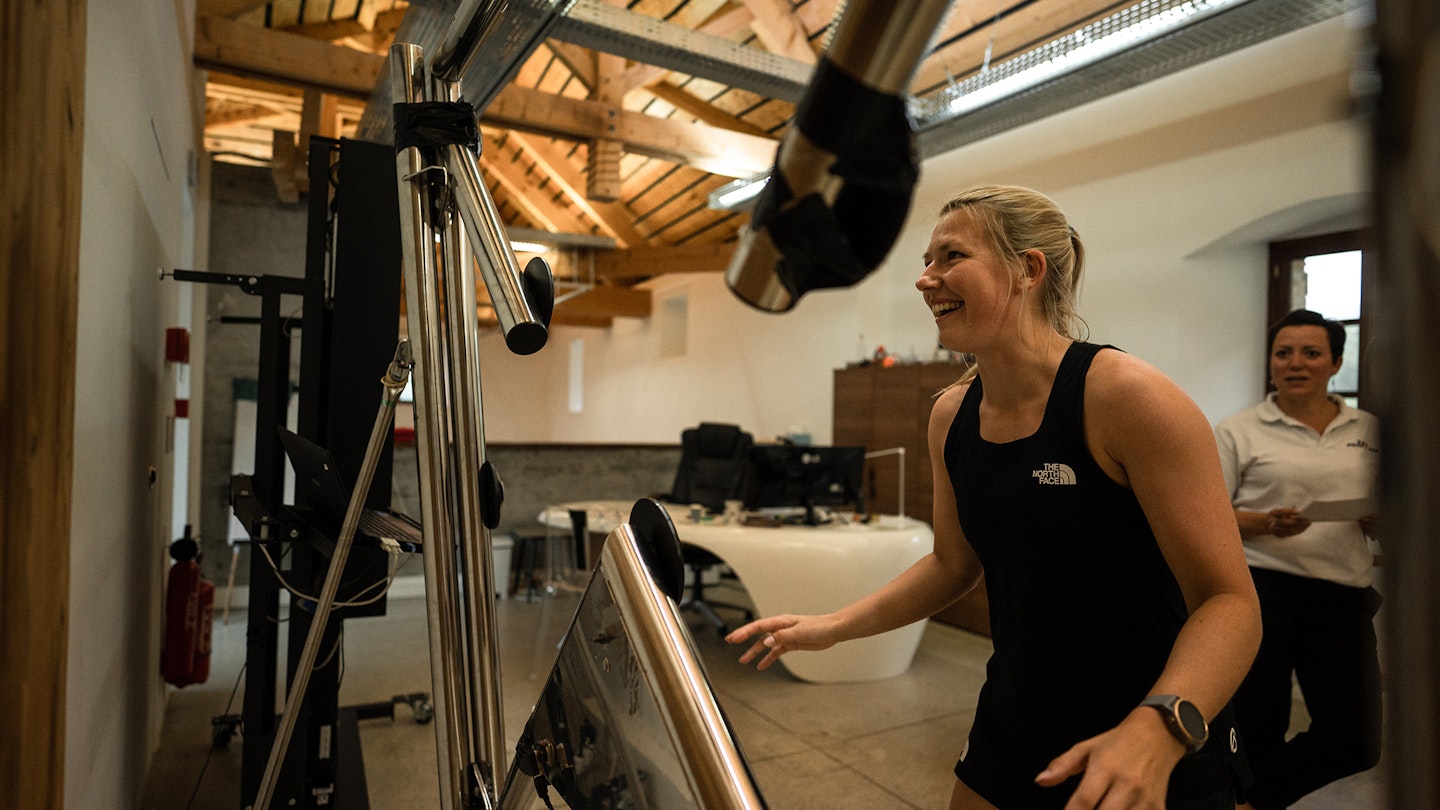
We could easily spend an entire article discussing the value and precise meaning of proprioception. In short, the term refers to your body's ability to sense its own spatial position within its environment, and quickly react to changes in either system.
Your body does this by using proprioceptors, which are specialised sensors scattered throughout your muscles, tendons, and joints. They act as a kind of internal guidance system, detecting tiny changes in things like tension, movement, and force, then reporting those changes back to the brain.
These changes being things like the ankle beginning to over-extend, or a small underfoot bump throwing off your balance. Here's the cool thing – you can train your body to detect and report these changes faster. This is crucial for preventing common injuries like sprained ankles, as well as excellent for increasing your agility on the trails.
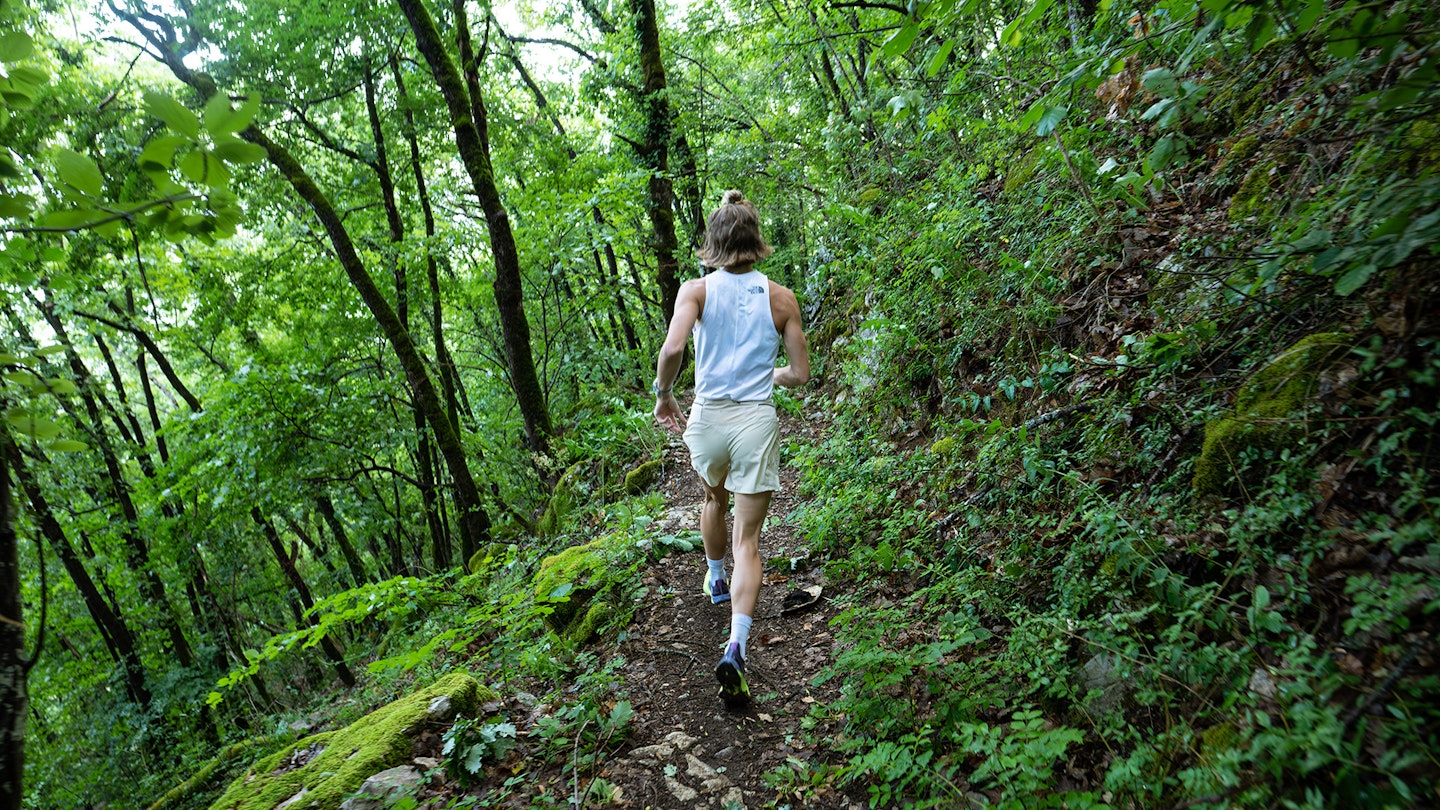
For Davis (on training days), it's more important to be able to move smoothly and efficiently through tough technical terrain than to just simply move fast. At the pointy end of the sport, ultra runs are as much about endurance as they are about speed, and every step has hazardous potential.
"I think running gets a bad rep for being bad for joints, but that’s not strictly true" opines Davis. "Most people turn to running after an injury, and then they don't focus enough on injury prevention. That's why proprioception is absolutely huge in my training. I stand on one leg on a balance board when I'm watching TV"
If that's too advanced for your balance capabilities, why not give it a shot without the board to work on strengthening and protecting your ankles. Another way you can improve your body awareness is by closing both eyes and either balancing on one leg, or trying to walk in a perfectly straight line. Without visual queues, you rely on (and train) your proprioceptors.
Plyometrics
Plyometric exercises (or, in Davis' terms, "stuff that makes you springy and bouncy") focus on explosive, high-intensity movements that are essential to the physics of running. At first glance, plyometrics seem designed to help with those bursts of power required for a fast uphill dash. But there's more than meets the eye with this discipline.
Running, if we weren't capable of plyometric effects, would be a heavy horrible slog. The human body's ability to absorb the landing impact of each step and then spring straight back into the air is key to all aspects of running. Bouncing is the name of the game.
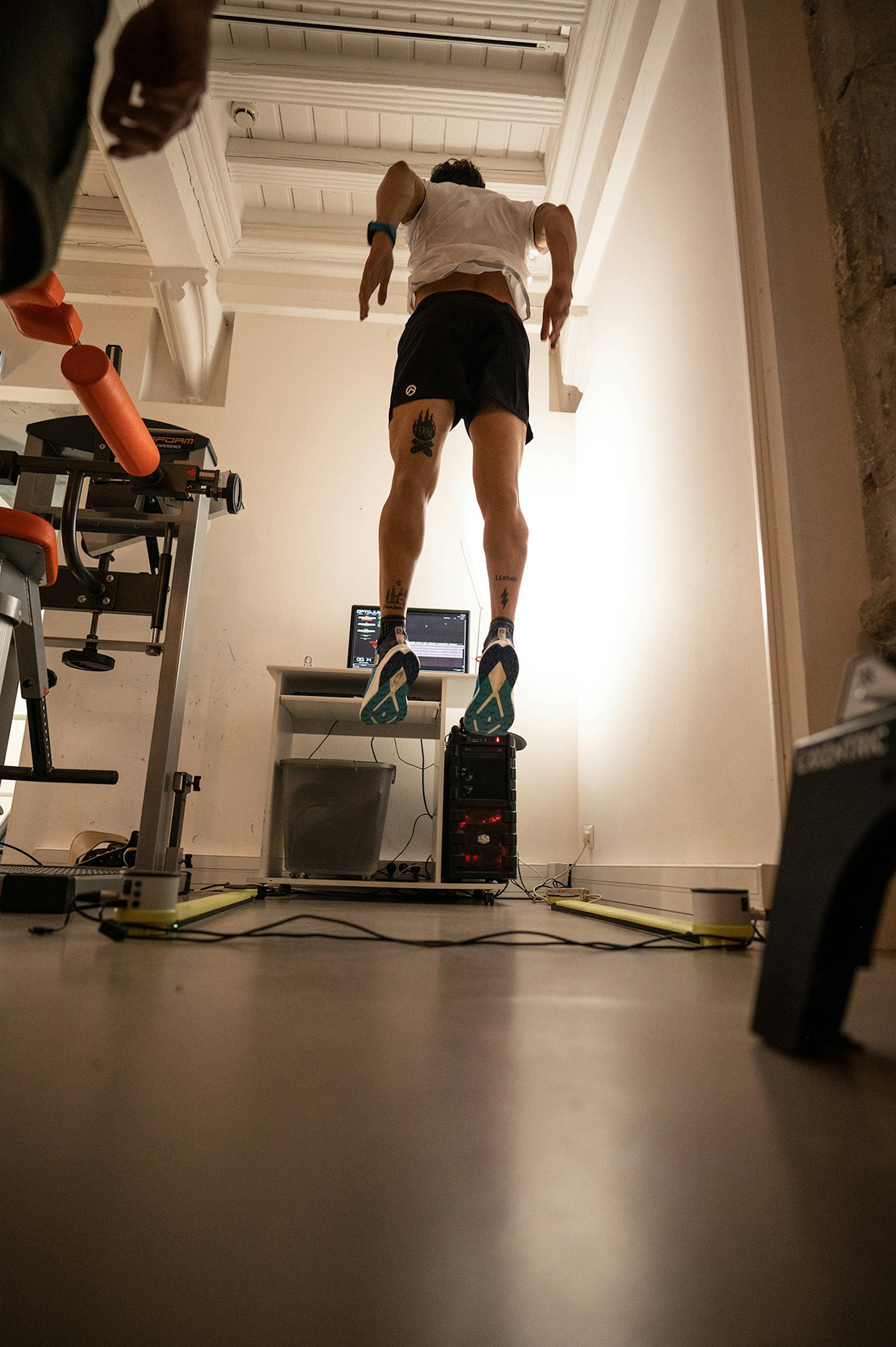
You can use plyometric exercises to reduce the amount of contact time between your feet and the ground, which massively increases the efficiency of your running. Fast single-leg hops both forward-and-back and side-to-side are excellent for conditioning your muscles and joints to handle repeated explosive movements. This is essential for technical assents.
Some runners incorporate uphill drills into their training, which Davis does using her treadmill. "A big benefit of that is you don't have to run down afterwards". Uphill bursts are one of the few ways to gain strength through running by itself. However, it's important not to push yourself beyond what's safe for your body. This mantra is central to Davis' entire training philosophy.
A note on the dangers of pushing yourself
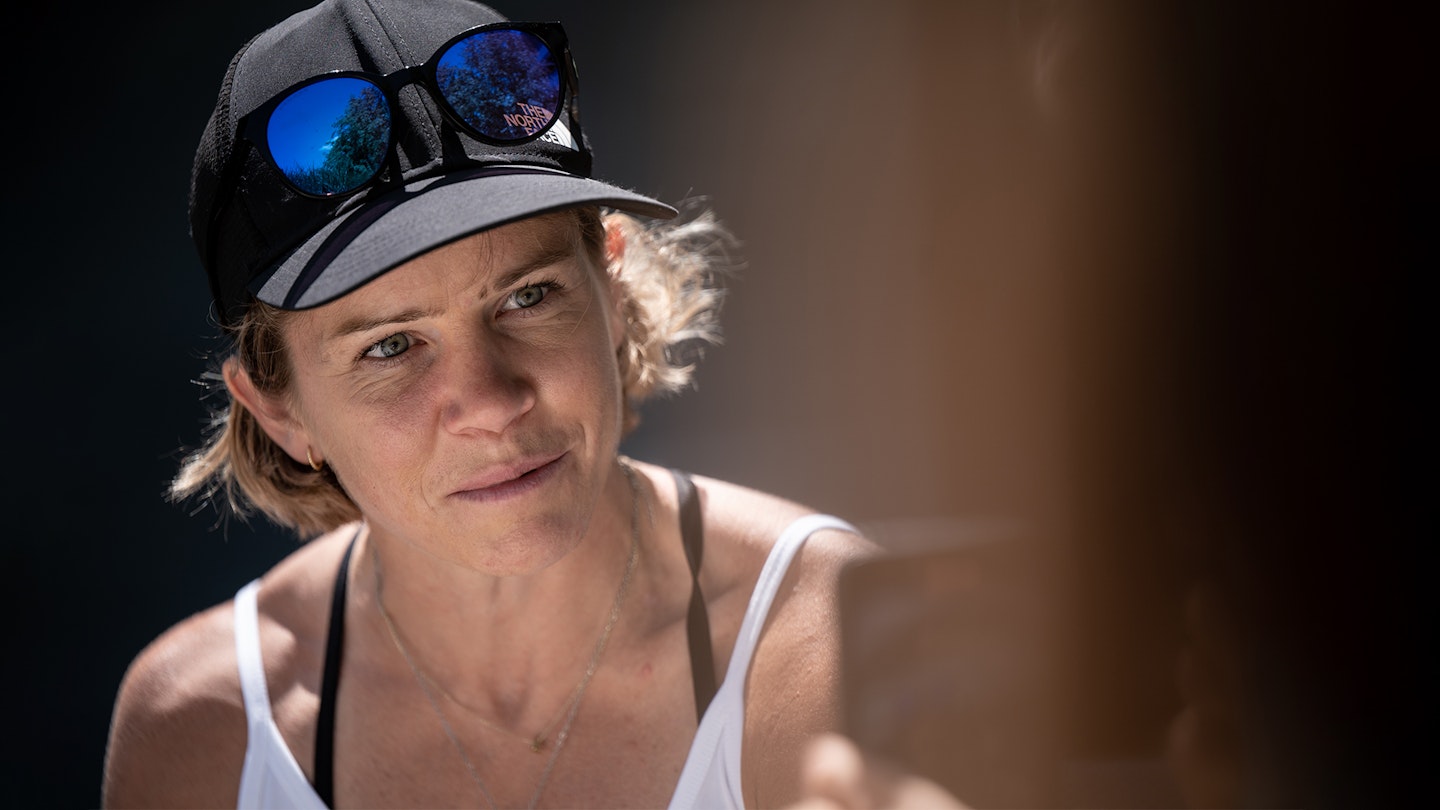
"My biggest strength is my mentality" says Davis. "My mind can push me beyond what my body is capable of, and that's something that I've come to appreciate as a risk, as well as a blessing".
Davis, like all ultra runners, is no stranger to a gammy ankle or bruised up shins. This is an extreme sport, and it's inevitably hazardous. Davis' mindset changed after the dangers of her profession were rendered into sharp reality during the Skyrunning World Series.
In the last leg of the Calamorro Skyrace earlier this year, Davis managed to climb from second place into first. "My mind can push my body beyond what it is, maybe, capable of." Davis says, reflecting on the race. "Which can be dangerous. It's what made me collapse with heatstroke."
Before Davis could cross the finish line, her legs gave out and her body collapsed. Luckily, doctors and medics were nearby and able to treat her immediately. She was rushed to hospital.
"People want to be able to disconnect their mind from their body, but it is still extremely important to keep an ear out and listen to what its saying. Pain is a unique feeling. It’s there to protect your body, it’s why you yank your hand away when you touch a hot kettle.
"But what we do, through training and conditioning, is we learn to override pain. Because it doesn’t really exist. It’s an emotion, and you can learn to ignore it, which I never really appreciated until I ended up in the hospital from just endlessly pushing myself."
How to have the best racing mentality
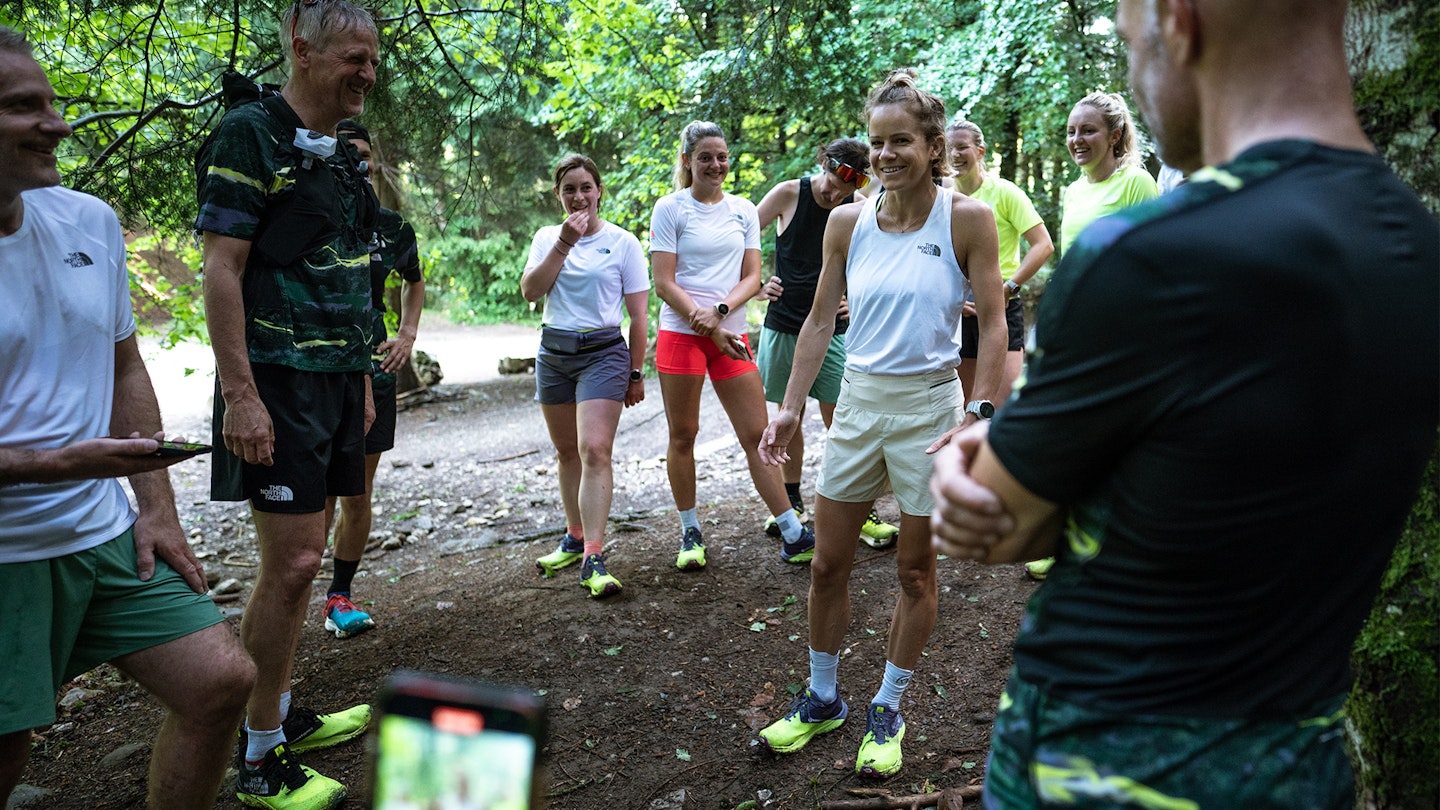
It can be scary to come back to racing after something as severe as what Davis went through. Nonetheless, only three months later, she took second place in the Eiger Ultra 51km race. And this outstanding placement is not the product of the runner ignoring everything she learned in Calamorro.
"You always, always need balance – in everything"
"It's all well and good wanting to win", she remarks, "but you also need to have the perspective that ultimately... it doesn't matter. It's okay if you don't win. The things that you're worried about don't exist."
As we closed out our interview with Davis, we asked her to share a bit more about her mindset. "Honestly", she laughed, "it's almost stupidly simple. It's just running. And I run because I love to do it, moreso than because I want to win."
"You always, always need balance – in everything. You have to be ready to push yourself and empty the tank, but you can't let that drive dominate everything else. My friends and family want me to have fun. I always try to. And I think that leads to success, because a happy runner is a fast runner."
We don't think an athlete's mentality can get much better than that.
You can follow Elsey Davis at her Instagram @elseydavis
